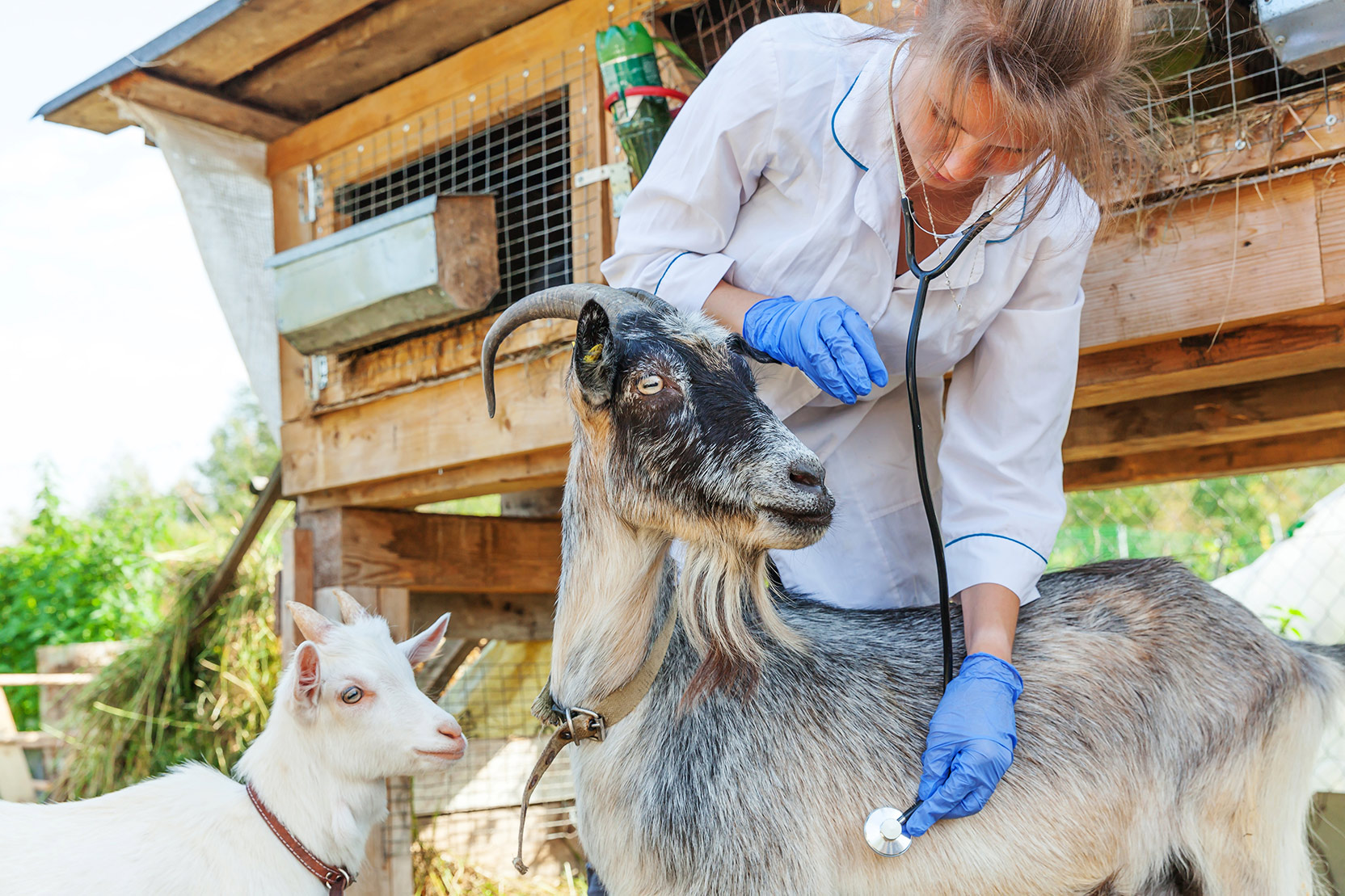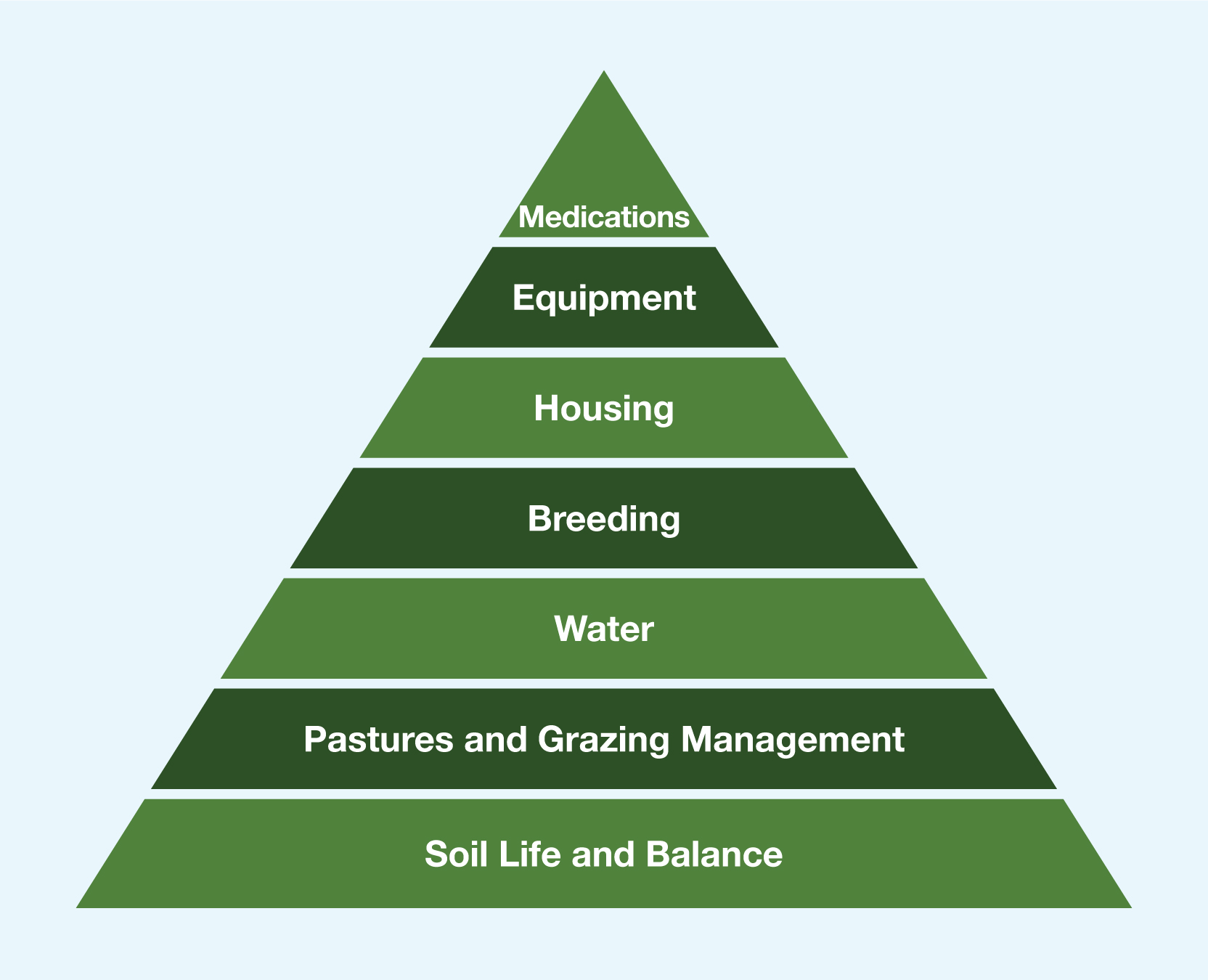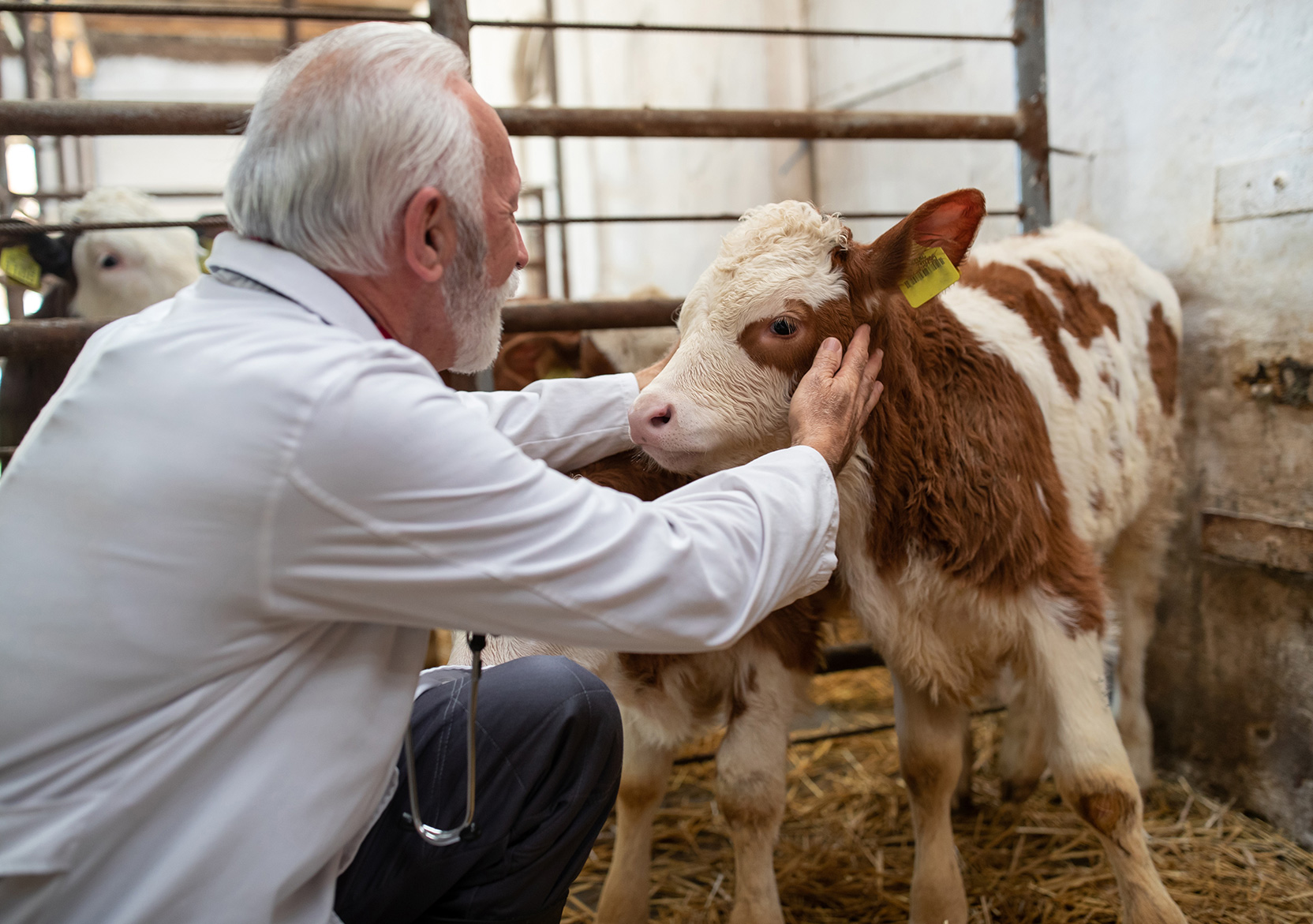1 Veterinary role on O/A farms
 Veterinarians wear many hats – in practice and at home in their personal lives. They can be the investigator, the diagnostician, the surgeon, the bearer of bad news, the healer, and on and on. As such, adaptability is one of the core skills of a veterinarian. What, then, is the veterinarian’s role on O/A farms? This chapter will first examine current trends of veterinary use on O/A farms to better understand and determine what that could be.
Veterinarians wear many hats – in practice and at home in their personal lives. They can be the investigator, the diagnostician, the surgeon, the bearer of bad news, the healer, and on and on. As such, adaptability is one of the core skills of a veterinarian. What, then, is the veterinarian’s role on O/A farms? This chapter will first examine current trends of veterinary use on O/A farms to better understand and determine what that could be.
Veterinary use on O/A farms appears to be dichotomous in that they are either used and well-integrated or not used much at all (e.g., only in extreme cases or emergencies (Duval et al., 2016; Steneroden, 2021). Larger O/A farms that conduct more intensive farming are more likely to work closely with a veterinarian. In addition, O/A farms that reported greater satisfaction with their veterinarian tended to have a veterinarian that works with several O/A clients. For O/A farms that did not work with veterinarians regularly, farmers attributed a lack of respect and understanding of their goals as a reason for not seeking veterinary services. Some report that veterinarians were not the “best-qualified health management advisors” and seek information from other sources such as the internet, social groups, and blogs (Duval et al., 2016; Steneroden, 2021). Not being aware of the farmer’s goals and common practices can lead to breakdowns in communication, trust, and, ultimately, the working relationship between veterinarian and client. Failure to meet these clients’ needs can lead to missed opportunities for those clients, their animals, and your veterinary practice.
“According to organic farmers, veterinarians were not the best qualified health management advisors, because they perceived that veterinarians lack respect for farmers’ goals, most importantly being organic.” (Duval et al., 2016)
Perspectives on the veterinarian’s role
The following highlights some perspectives that were disruptive to the O/A producers and veterinary relationships and noted in recent literature and surveys from the U.S. and U.K. Frequently highlighted issues include:
- Veterinarian perspective: Lack of formal education on O/A principles and practices, O/A is not science-based medicine, mixed feelings about being able to meet organic producers’ needs, lack of O/A resources to learn from, producer mistrust and reluctance to seek veterinary help, producer waiting too long to call for services and resulting in animal welfare concerns and an inability to help in time.
- O/A client perspective: consider their animals to be healthier and need less veterinary care, consult other sources with knowledge and experience, don’t need traditional medicine, perceived negative mindset of vets towards organic agriculture (Duval et al., 2016; Sorge et al., 2019; Steneroden, 2021).
Many O/A farmers do not see or value the role of a veterinarian on their farm because they don’t use traditional or conventional products and medicines (Duval et al., 2016). But veterinarians can offer and are needed for much more than that to promote animal health.
Interestingly, these perspectives have a common thread. They both seek to be seen, understood, and respected for their knowledge, beliefs, and approach. Not surprisingly, seeking help or advice from someone is difficult if one does not feel that the other person sees, understands, or respects their goals. Similarly, it isn’t easy to help someone achieve something without seeing, understanding, or respecting their goals.
Much of this relates to perspective. Shifting perspective, not necessarily beliefs, can help. As a veterinarian, put yourself in the shoes of O/A farmers. Putting oneself in another’s shoes does not mean they will fit well or be liked. What it does mean is that you now have the common experience of understanding the shoes, or rather the goals and practices of the O/A farmer.
Veterinarians can do this with O/A clients by educating themselves and by listening to their O/A clients with an open mind. This is the best way to learn, build relationships, and work towards veterinarians becoming a more valuable resource for all clients.
Using a holistic veterinary approach
Oxford Languages defines holistic medicine as “characterized by the treatment of the whole person, taking into account mental and social factors, rather than just the symptoms of an illness.” This translates easily into veterinary medicine. For example, a farm may be experiencing a higher-than-average rate of retained placentas in their fresh cows. The veterinarian or farmer could just treat the symptoms of a retained placenta or provide care to help expel the placenta. However, a holistic approach by the veterinarian would include looking into why this farm has a higher-than-average rate of retained placentas in their fresh cows. This could include infectious reasons, but looking into the lifestyle and nutrition of the animals is also warranted. These additional considerations to the whole of a person, animal, group, entity, or problem also apply in advisory roles.
A holistic approach to health can bridge the perspective gap with O/A clients. “An advisory-oriented role in herd health management requires a holistic farm approach of advisors and farmers” (Duval et al., 2016). This is especially important given that many O/A producers choose their way of farming for holistic reasons. Using an approach aligned with their philosophies makes reaching common ground and mutual understanding more likely. The pyramid below outlines a holistic approach to farming used by some O/A producers. More specifically, it indicates a layered and building block approach to keeping animals and their environment healthy. Starting with soil life and balance, then pasture and grazing management, water, genetics and breeding considerations, housing, equipment, and medications. Veterinarians can provide input and learn from O/A livestock producers on each level.

“In the days of James Herriot, the role of a veterinarian appeared rather straightforward to their clients. There was an understanding that if an animal were sick or injured, the veterinarian would be called. However, in today’s age, the farmer or herd manager can and will often treat the animal or administer vaccines and other preventatives. From personal experience growing up on a dairy farm, I recall watching our veterinarian perform displaced abomasum (DA) surgeries. As I got older and into vet school, our veterinarian was rarely called out to the farm for that as our herd manager could treat them by roll & toggle technique. In addition, changing nutrition on the farm has significantly reduced the number of DA occurrences and treatments. The role of our vet changed. That role continues to change as the needs of the farm and animals change. Originally our veterinarian played more of a treatment-oriented role, then transitioned into an advisory-oriented role.”
–Delaine Quaresma, DVM, MPH
On O/A farms, veterinarians can play either or both roles depending on the situation. Given the nature and requirements of O/A farming, the veterinarian’s role will likely skew heavily to an advisory-oriented role. Charges for veterinary services provided by the veterinarian or technician must be made according to the time spent or service rendered, whether treatment or consultant based. The American Veterinary Medical Association (AVMA) has resources available to help with pricing strategies and business plans.
Consider integrating common natural or botanical treatments into your practice based on what you learn from your O/A clients or organic and alternative treatment resources and published literature. Use your knowledge of animal health and your veterinary skills to assess animal health and safety. Another way to satisfy the need for scientifically backed practices and holistic approaches is to cross-reference older textbook information and treatments before conventional therapies with current science-based studies (AABP). Some additional information and ideas can be found in the Treatments and Modalities chapter in this continuing education series and at the link below:
Avenues for veterinary influence on O/A farms

Use the following examples to learn more about O/A farming, livestock, and care. Understanding the industry and people within it can help veterinarians see where they can contribute to the health and success of those and the animals involved.

